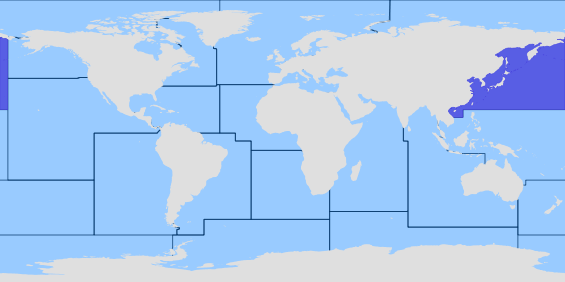ingliseThe carapace has the median teeth before the crevical groove blunt and inconspicuous: the rostral tooth is reduced to a tubercle, the pregastric tooth is replaced by a double row of 1 or 2 tubercles and a few inconspicuous median tubercles. The gastric tooth is the most conspicuous, it isbroad and blunt and bears a double row of tubercles. The surface of the carapace is very uneven and the tubercles are high. Between the postrostral and branchial carinae there are a few tubercles and many smooth areas. The abdomen shows a distinct median longitudinal carina on somites 2 to 5, that of somite 3 is by far the highest, and (like the one fo somite 4) bears numerous tubercles laterally. Somite 1 is quite smooth, and has the transverse groove only slightly noticeable in the extreme lateral parts. The exposed part of the following somites show no arborescent pattern, but in each somite there is a wide transverse groove there. In somite 2, both before and behind this groove there is a perfectly smooth broad ridge, a character in which the species differs from most others. In the following somites these ridges are tuberculate. In somites 4 to 6 the posterior margin is tuberculate. The fourth antennal segment has a sharp and high oblique median carina. Outside the carina the upper surface of the segment shows a row of tubercles. The outer margin of the segment bears 4 or 5 teeth (apical tooth of the segment not included), the inner margin has 5 to 7 teeth of irregular size. The anterior margin of the thoracic sternum is deeply U-shapedly incised. Each of the thoracic sternites bears a rounded median tubercle. The dactyli of pereiopods 3 to 5 show two short fringes of hair each. Colour: the dorsal surface of the body is greyish or purplish brown with darker spots. The distal segment of the antenna is often lighter. The first abdominal somite shows dorsally often a dark blue colour (Ref. 252).
Vaade tõlge
Tõlgitud inglise Bing
Tõlge on üksnes näitlikustamiseks: lähteteksti piiratud kvaliteedi tõttu on morfoloogilised kirjeldused süsteemi beetaversioonis kättesaadavad ainult ingliskeelsetena. Mitmekeelne teave on kättesaadav tulevastes versioonides.
eestiJärgi on keskpärane hambad enne crevical soon nüri ja silmapaistmatu: rostral hammas on vähenenud ka tubercle, pregastric hammas asendatakse kaks rida 1 või 2 tubercles ja mõned silmapaistmatu keskpärane tubercles. Mao hammas on kõige silmatorkavam, see isbroad ja nüri ja kannab kaherealised tubercles. Seljakilbi pealispind on väga ebaühtlane ja nende tubercles on kõrge. Postrostral ja branchial carinae vahel on mõned tubercles ja sile paljudes valdkondades. Kõhu kuvatakse erinevat keskmise pikitasapinna carina somites 2-5, mis somite 3 on vaieldamatult suurim ja (nagu üks fo somite 4) kannab arvukaid tubercles külgsuunas. Somite 1 on päris sile ja on vaid veidi märgatavad põiki groove äärmise külgmised osades. Järgmine somites katmata osa näidata arborescent muster, kuid iga somite on lai põiki groove seal. Somite 2, enne ega taga selle groove on täiuslikult sile lai ridge, kus liikide erineb enamikust märk. Järgmine somites on tuberculate neid servi. Somites 4 – 6 istmik marginaal on tuberculate. Neljas antennal segment on järsk ja kõrge kaldus mediaan carina. Väljaspool carina segmendi pealispind näitab järjest tubercles. Segmendi välisserva kannab 4-5 hambad (ei sisaldu segmendi tipmine hammaste), sisemine marginaal on ebaregulaarne suurus 5 – 7 hambad. Rindkere rinnaku anterior marginaal on sügavalt U-shapedly lahti lõigata. Iga rinna sternites kannab ümardatud keskpärane tubercle. Pereiopods 3-5 dactyli näitus juukseid iga kahe lühikese äärealade. Värvus: keha rinna pind on hallikas või pruun, tumedama laigud lillakad. Antenni distaalne segment on sageli kergem. Esimene kõhu somite näitab liigutustega sageli tume sinine värvus (Ref. 252).
 Pilt puudub
Pilt puudub


